Monday, June 15th, 2020 by Julian Karsunky
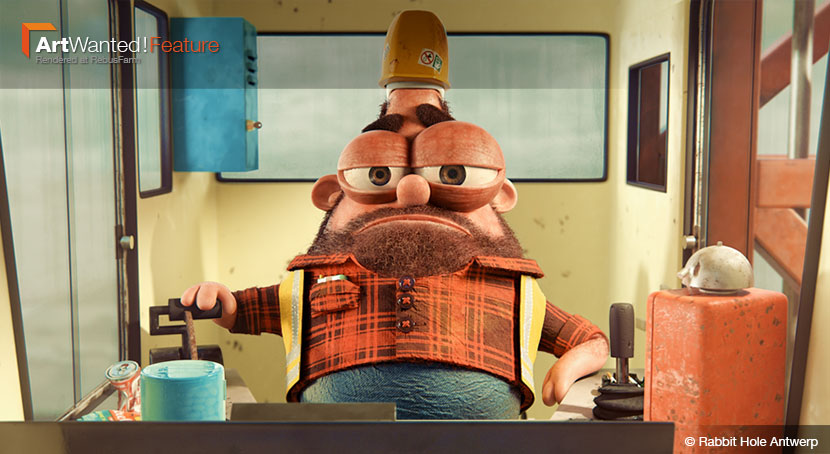
This month’s ArtWanted! feature once again leads us to the wonderland that is animation. When Bram Van Rompaey and Reinout Swinnen first founded their own company in 2006, they had no idea how deep the rabbit hole would go. Today, Rabbit Hole Antwerp is an established studio, providing 2D and 3D animation, motion graphics, illustrations, and most recently, AR experiences for a wide variety of clients. The co-founders’ shared vision is firmly rooted in a deep love for animation, with their work just oozing personality from every frame. The two of them complement each other well, not only in their creative endeavors, but in our interview as well!
Keep on reading to find out more about the power of perseverance, a distaste for perfection and keeping it simple.
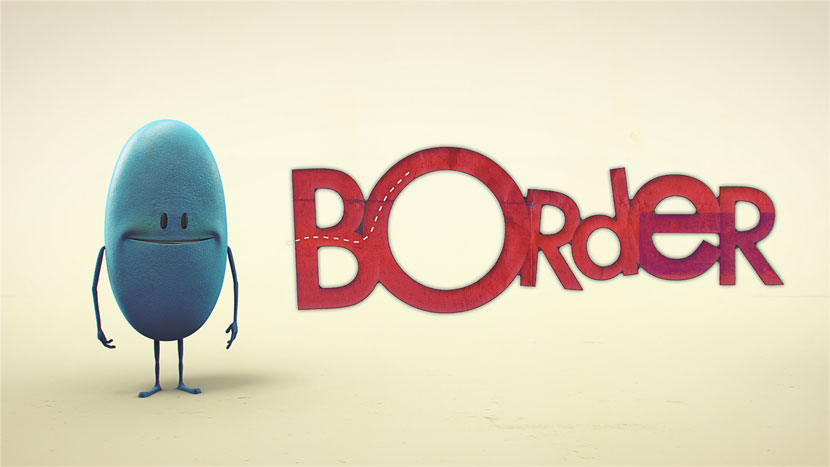 A cover shot for ‘Border’, the project that helped rekindle Bram and Reinout’s pure joy for animation.
A cover shot for ‘Border’, the project that helped rekindle Bram and Reinout’s pure joy for animation.
Hi guys, thank you so much for joining us! To start things off, please introduce yourself to our readers.
Bram: Hi everybody, we're both born in 1978. I'm 41 and I live in Antwerp, Belgium.
Reinout: I'm 42, which makes me the old and wise one. I live in Kortenaken, Belgium. Together we founded Rabbit Hole Antwerp.
Do you recall when and how you first consciously encountered CGI?
Bram: I vaguely remember a 3D short that was playing on a small TV somewhere in a museum on what I believe was a school trip to Brussels. A lot of kids were crowding around the TV to see the film, but I stuck around and watched it at least 4 times in a row. This must have been sometime in the late 80s, way before ‘Toy Story’. It's funny how when we try to remember the time something happened, the starting point is whether it was before or after the first Toy Story movie.
When and why did you then decide to pursuit a professional career as a 3D artist?
Bram: I was never that focused on 3D in particular, it was animation that interested me. For the most part, I think my drawing skill lend itself more to CG than hand drawn animation. Things started becoming serious after Reinout and I collaborated on an animation job for a museum – at least that’s what I consider the start of my professional career.
Reinout: We felt that working together went really well and in 2006, we decided to start a company. We didn't put much more thought into it than that. We were unemployed, and there weren't many (if any) animation jobs around. So we figured we'd be our own employers. It was purely out of love for animation. We didn't have a business plan or a vision. We just wanted to make animated movies!
What training or education do you have?
Reinout: Bram and I went to the same school in Brussels, the LUCA School of Arts is what it’s called now, I believe. After graduating, we still didn't feel like we knew how to animate, and then we stumbled upon Animation Mentor. It's an online school focused primarily on 3D character animation. I can say with full confidence that everything I know about animation, I learned there. It wasn't cheap, but worth every cent.
Bram: Funny enough, Reinout is now the one who's in charge of the animations, while I barely animate anymore. Instead, I'm focusing on modeling and shading, the general look and feel. I've learned a lot from the online platform Digital Tutors and other means of self-study.
Please tell us more about Rabbit Hole Antwerp, the company’s history, its field of work and general philosophy?
Reinout: We only recently changed the name of the company to Rabbit Hole. Before, it was called plan78 – since we're both born in 1978 and we thought we had a plan, which, as it turned out, we really didn't. In hindsight, it probably wasn’t the best name. After a couple of years, we started to get the hang of it: we figured out ways to create quality animations with limited resources, and we're quite good at adapting to different styles.
Bram: We've always been lucky with jobs, I think. They sort of just…came to us. We never had the intention of becoming a big company, we really like that it's just the two of us. But we've always strived to keep bettering ourselves, both creatively as well as in running the company. We do bring in some freelancers occasionally to get the job done. I think one of the advantages of this is that our clients are actually in direct contact with the creatives. When a client talks to us, they know that everything we discuss can be done within the budget.
When and under what circumstances was the studio established?
Reinout: Bram just straight up asked me “do you want to start a company?” one day. I was hesitant at first, but there really weren't that many options for us at the time. Initially, the main reason to form a company was to be able to write invoices when we did land a job. There was no big plan or vision for the future beyond that – making animated films for a living was all we ever knew and wanted.
We realize now that not a lot of companies that start out in such an amateurish manner survive for as long as we did. I guess this has to do with the fact that we're very self-critical and kept improving on all levels. What started as two boys without a clue somehow turned into an actual company over time. To sum it up, it boils down to perseverance.
What’s the story behind the name ‘Rabbit Hole’?
Bram: When we decided to change the name, we figured the right name would just come to us eventually. Unfortunately, that didn't happen, so we started thinking about things that define us, that mattered to us. That didn't work either. Then one day, we were talking about it again, Reinout was leafing through the ‘Animators Survival Kit’ book and said “What about Rabbit Hole?”. He said he saw a rabbit in the book and that's how it came to mind. Strangely enough, when we looked for the rabbit in the book afterwards, we couldn't find it. So the name did sort of come to us after all.
Reinout: We still like the name, as it refers to a classic tale and has this feeling of wonder to it. The rabbit hole in ‘Alice in Wonderland’ leads to wonderland; it's a gateway to the unusual, where everything is possible. A perfect name for an animation studio!
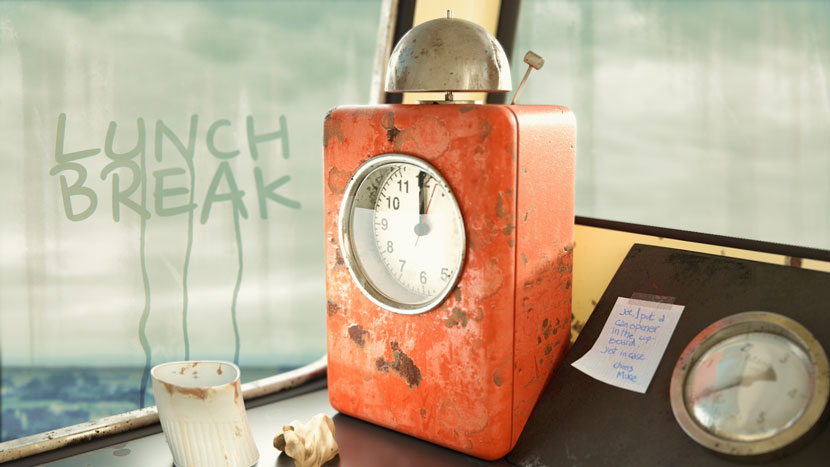 A glimpse at ‘Lunchbreak’, one of two passion projects Bram and Reinout are working on in their spare time.
A glimpse at ‘Lunchbreak’, one of two passion projects Bram and Reinout are working on in their spare time.
What services do you provide?
Bram: Our main focus is on 2D and 3D character animation, but we also do motion graphics and illustrations. We recently partnered with Playar Studio to create AR experiences as well, we’re very excited about that. Augmented reality is becoming a new and thrilling way to engage people and it fits right into what we were already doing as a company.
Who are your clients and target markets?
Reinout: Very diverse, actually. We work for agencies but also directly for clients. We make commercials, explainer animations, animation for social causes and presentations for events. Basically, anyone in dire need of animation!
Running the studio, what are each of your general responsibilities and daily tasks?
Reinout: I'm in charge of animation, but I also do the rigging and technical stuff that needs to be done before the actual animation process starts.
Bram: I'm responsible for the look and feel, I design the characters and am in charge of post-production. With 3D characters, I do the modeling, texturing, shading and rendering. For a couple of projects, we outsourced the modeling and rigging, because doing everything between just the two of us can get a little overwhelming at times.
How do you divide administrative and management work?
Reinout: I'm mostly in charge of making sure that everything finds its way to our accountant. Bram has the tendency of pilling up papers in strange places. But invoices depend mostly on who was leading the project.
Bram: It can get tough sometimes combining animation work with administration. Project management and dealing with freelancers is mostly my part.
What does your usual workflow look like when working with a client?
Bram: We place great importance on animatics. A typical workflow for us begins with 2D designs to establish the look and feel. Next, we turn the characters into 3D models and refine the look by texturing and shading. If there is a voice over, we try to get the recording as early as possible. Then, we make an animatic instead of just a storyboard. Once the client approves, we mostly play it pretty straight all the way to the finish line: we start rigging, because at this point we know exactly what the character needs to be able to do. We also make the props and backgrounds based on the animatic. Then the animation starts. With the client’s approval, the rendering and compositing begins. The last step is to add sound FX. Well actually, the very last step is going to the local bar to get a well-deserved cold beer.
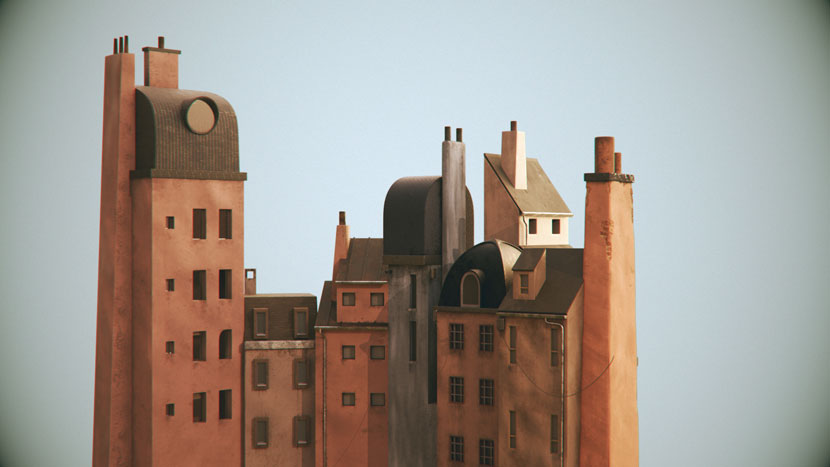 A test render for the cityscape featured in‘Lunchbreak’.
A test render for the cityscape featured in‘Lunchbreak’.
To you personally, what are the biggest benefits and disadvantages of running your own studio compared to more traditional forms of employment?
Bram: You often hear people say “you can choose your own hours and you're your own boss”, but that’s not entirely true in my experience. When you hit crunch time on a project, it certainly feels like the client is your boss and he's making you work 24/7. Then again, there are times when I can walk down to the store on a Thursday afternoon, which isn't something everyone can do. Every week is different. In a way, the benefits are also the disadvantages and vice versa, it’s two sides of the same coin.
Considering the experience and knowledge you have gathered over the years, what advice would you give to aspiring business owners?
Bram: I remember a fellow student in our class. He wasn't the greatest artist and he didn't spend all his time focusing on school work, either. However, he did end up making one of the best films that year! The reason he managed to do so was that he was very well aware of his own strengths and weaknesses: he adapted a very simple drawing and animation style and used it effectively to make an incredibly powerful animation. What I take away from this, is sometimes, it's more important to know your own shortcomings, so you can turn that into a strength. I guess you might call this creating your own style.
Reinout: I agree, as a business, it’s indeed very good to have your own style. However, it can be equally beneficial to be able to adapt to different styles.
Another advice I would like to give more on the financial side: there are jobs that pay the bill, but don't exactly fill your heart with joy. And then there are projects that are incredibly fulfilling, but don't pay enough to cover the hours you end up working on them. We make sure these two kinds of jobs keep balancing each other out. Also, if the job is no fun and doesn't pay the bills, kindly decline.
How are you holding up in these trying times? Has the current crisis impeded your work?
Reinout: Overall, we're doing alright. Some jobs did get cancelled or postponed, so there has definitely been some kickback as a result of the crisis. It’s mostly the jobs that needed actual live action on set, or commercials that were specific to a certain TV show. On the other hand, we’ve noticed a growing interest in animation, because of the obvious benefits in regards to social distancing. We'll just have to wait and see where things go from here. There’s also more interest in AR as it gives you an engaging experience on your own smartphone. So that's another promising way for brands to still be able to interact with an audience.
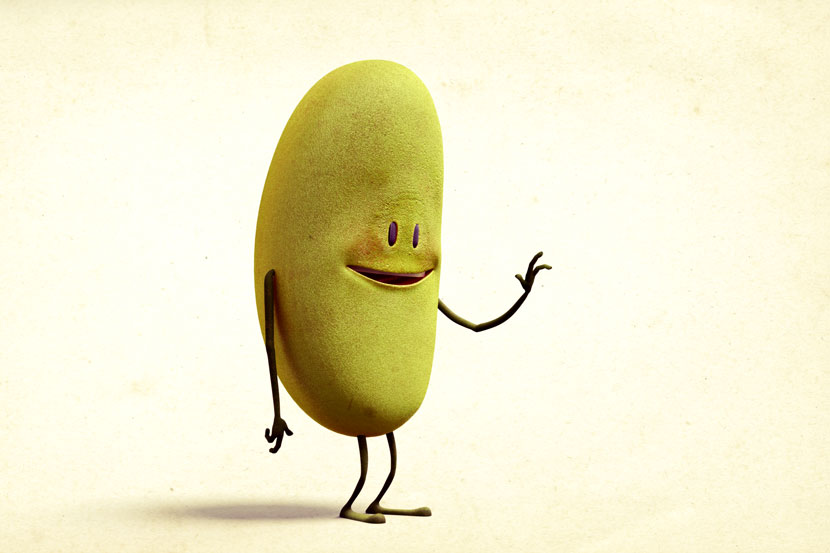 “Keep It Simple, Stupid!” Proper animation can turn even the most abstract character design into a fully-fledged personality.
“Keep It Simple, Stupid!” Proper animation can turn even the most abstract character design into a fully-fledged personality.
Generally speaking, is there a specific design philosophy or school of thought Rabbit Hole Antwerp adheres to? What inspires you as 3D artists?
Reinout: As a small company, we can't make big-budget-over-the-top productions, but that is not were our interest lies anyway. We live by the KISS principle: we try to keep our characters and sets simple, and put a lot of effort into making them believable with shading, texturing, and animation especially. I'm always amazed by the amount of animations out there that look amazing but are animated poorly. The core of any animation company should be solid animation and not trying to make it look nice to cover up poor animation. Don't get me wrong, I also see a lot of incredible animation work that looks great and is truly inspiring.
A quote from your website reads “we don’t aim for perfection”. How would you describe your approach to character design and animation?
Bram: I think a lot of people would agree that perfection can be boring. In designing a character, and especially in texturing it, I try to slap things on quickly, really rush it. I started deliberately doing so once I noticed that some of the projects where we had no other option but rushing things, actually turned out pretty good. Being forced to make quick decisions can actually be very beneficial! So now, I try to work fast initially, then start refining afterwards. Obviously, I do want to catch any obvious mistakes while there is still enough time to fix them. But the overall feel stays the same. In short, I try to avoid having the sketch look better than the final product.
What makes for a believable character?
Bram and Reinout simultaneously: Animation!
Bram: Believability comes from the inside. That's why you can recognize a friend from a distance: you’re inherently familiar with the way he moves. Movement of a character is just an expression of the personality within.
Reinout: That's why a poorly designed character can still be engaging to watch. Even a simple cube can be animated in a believable and adoring way. The design of a character can create a personality and show you what kind of person the character is. But animation is what makes it believable.
Can you elaborate on how this concept translate to abstract characters?
Reinout: Good character animation has no limits in terms of design. With every character you need to find how it would move and react. The aforementioned cube will have limitations in terms of movement, of course. But nonetheless you can make it sluggish, or eager, or shy, etc. I need to imagine what character traits the objects have to be able to animate it, and also to keep it consistent throughout the movie. It gives me something to hold on to.
Let’s talk about your work in more detail, and take a closer look at some of your animation work, starting with ‘Border’, your contribution to ’12 Minutes About Peace’. Can you tell us a bit more about the project itself and your involvement?
Reinout: ‘12 minutes About Peace’ is a collection of 12 animated short films to commemorate the centenary of the first world war. The production company S.O.I.L. approached us and said they wanted to work with us for a pitch. Out of 75 ideas pitched total, ours was chosen to be one of the 12 films to be subsidized for the project.
Talk to us about the themes, characters and the way you chose to portray your ideas!
Reinout: There wasn't much time to come up with an idea. I think we had a couple of days from the moment they called us up to the deadline for the pitch. I actually scribbled down these 2 simple characters with a border line between them while I was still on the phone with the producer. I sent my doodles to Bram who turned the idea into an actual design.
Bram: We wanted to keep the characters simple and colorful. But with no reference to skin color, to not offend or single out anyone. We didn't want to depict a certain race or a country, we wanted them to be looked at as characters, nothing more. The only difference between the characters are their color and the fact that they are separated by the eponymous border.
How long did it take you to complete the project and what were some of the challenges you had to overcome?
Reinout: For this project, we were lucky. We had an entire year to work on it. We had other jobs obviously, so we weren't working on it constantly. The biggest challenge was the fact that the film is one long continuous shot, without any cuts. As a result of everything being connected this way, redoing animation or changing the timing could get very frustrating.
Bram: The same goes for the rendering. When sending it to RebusFarm, I kept my fingers crossed that everything would come out the way it should. Thankfully, it did! There were only a couple minor tweaks that needed to be done afterwards.
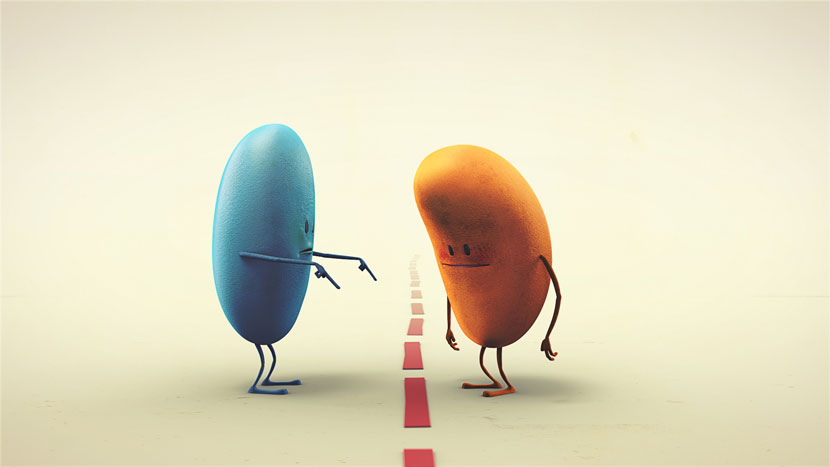 While this still is from the ‘Border’ animation, it shows why the characters where the perfect fit for the social distancing ‘Stay Safe’ lense Rabbit Hole Antwerp developed with Playar Studio.
While this still is from the ‘Border’ animation, it shows why the characters where the perfect fit for the social distancing ‘Stay Safe’ lense Rabbit Hole Antwerp developed with Playar Studio.
Looking back, how important was ‘Border’ for your personal and professional development?
Reinout: I still think this is the best piece of animation I've done so far! It was a huge challenge to create two different personalities out of two identical characters.
Bram: For me, ‘Border’ felt like a wakeup call. It served as a reminder why we fell in love with animation in the first place. Afterwards, we decided we would make more time for personal work in between paying jobs.
Reinout: Which, as it turns out, is easier said than done. Right now, we're working on two animated shorts in our spare time simultaneously and we’re struggling to get them both done.
Bram: It has been hard to get funding for these two projects. Fortunately, RebusFarm is supporting one of these shorts, called ‘Lunchbreak’, so hopefully we will get this one finished soon.
Tell us more about ‘Lunchbreak’!
Reinout: About a year ago, Bram came to the office on a Monday and told me he wanted to do a 3D animation showcase, a short gag that would show what we're all about. He had been working on a character over the weekend and even in this early stage, it already looked really cool. We started brainstorming, and ended up with a one-and-a-half-minute idea. That was a bit longer than we initially intended, but we decided to go for it. It's about a construction worker high up in a large crane, who has totally dissolved into his job. The only light in his life is his daily lunchbreak. But, of course, in the short film, this goes horribly wrong.
Bram: You know that moment where you know what's best, but it takes to much effort, so you decide to try to half-ass it, which goes all wrong and you end up with even more work cleaning up the mess. That's what ‘Lunchbreak’ is about.
The characters from ‘Border’ recently made a return as part of a unique AR project measuring safe distances during the Corona pandemic.
Bram: From the moment we partnered with Playar Studio, we knew we wanted to do something different with AR than the standard face lenses. Our goal with animation is to tell stories and engage – which is what we’re to do with AR. The ‘Stay Safe’ lens started as a test to see if we could get these characters from ‘Border’ to work in an AR environment. It turns out it's not that simple. But when we finally made it work, we started thinking of doing something more with it. At that point, the Corona crisis was in full effect. We made a lens were these two characters show you the exact save distance in a loop-able animation. I was amazed myself, because 1,5 meters (6 feet) is more than you might think. The people over at Snapchat were very impressed with our work and made Playar Studio an official Snapchat Creative partner.
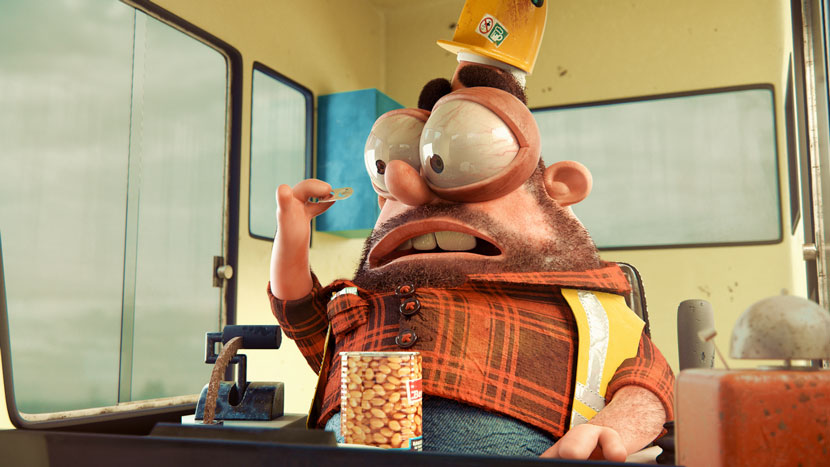 Meet Joe, the construction worker whose ‘Lunchbreak’ turns into a disaster in Rabbit Hole Antwerp’s latest animation in the making.
Meet Joe, the construction worker whose ‘Lunchbreak’ turns into a disaster in Rabbit Hole Antwerp’s latest animation in the making.
Tell us about your overall experience with RebusFarm. Is there anything you especially like about our service?
Bram: The best thing about RebusFarm is that you keep evolving, making the service better year after year. Sometimes, I get the feeling that some software packages change things just for the sake of changing instead of improvement. I don't have that feeling with RebusFarm. In all the years we’ve been using the service, all the changes I’ve experienced have made it better. Also, your customer service is top notch!
In closing, is there anything else you want to say? Any present or upcoming projects you’d like to mention?
Reinout: Definitely keep a lookout for Playar Studio. It's a new playground for us, and some exciting stuff is sure to be coming your way soon!
Sounds like we have a lot to look forward to! Bram, Reinout, thank you both for taking the time and all the best in the future!
Keep up with Rabbit Hole Antwerp and their work here:
How to join ArtWanted!
You want to get featured in our ArtWanted! campaign and win 250 RenderPoints on top? Submit your work, rendered at RebusFarm, to Questo indirizzo email è protetto dagli spambots. È necessario abilitare JavaScript per vederlo.! Visit our Art Wanted! page for more information.
>> Read more articles on our blog
